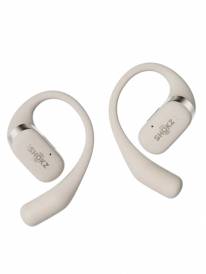Brooke Williams Pilates Interview

Brooke Williams Pilates Interview
Pilates exercise offers greater short term improvements in pain and movement than other physical activities, according to an international review.
The Australian research review, The Effectiveness of Pilates Exercise in People with Chronic Low Back Pain (Feb 2014, PlosOne) of 152 studies found Pilates provided equivalent improvements to other forms of physical exercise.
Back In Motion Health Group, Founder and Group Director, Jason T Smith said the review showed that Pilates exercise resulted in statistically significant improvements in pain and functional ability in the short term compared to usual care and physical activity in people with chronic lower back pain.
'Chronic low back pain (CLBP) for more than twelve weeks is very common and can be debilitating," Mr Smith said.
'Physiotherapists at Back In Motion have found Clinical Pilates to be an ideal physical exercise for those with chronic lower back pain.
'Our qualified physiotherapists regularly prescribe Clinical Pilates exercise for clients with chronic lower back pain and we see impressive results. This review supports the role of exercise in recovery from back pain.
'Pilates promotes core stability, strength, posture, controlled movement and flexibility which are all beneficial for people who are suffering from lower back pain or are beginning to show signs of developing lower back pain later in life.
'Pilates is particularly good for those at risk of or suffering from lower back pain as it is designed to strengthen the deep abdominal and pelvic floor muscles.
The type of exercises and the level of difficulty prescribed can be modified according to the individual's circumstances" Mr Smith said.
Back In Motion practices offer clinical Pilates sessions guided by a qualified physiotherapist with specialised Pilates equipment including reformers, trapeze and more to help specifically prevent and treat lower back pain.
Jason T Smith founded the Back In Motion Health Group in 2000 which is now Australia's leading and fastest growing provider of physiotherapy and related services. As the Group Director (CEO), Jason leads a team of more than 420 staff in over 60 locations. The success of the Back In Motion Health Group has been recognised by its sustained exponential growth and by a number of formal accolades including being awarded a BRW Fast Franchise for five consecutive years and Jason's award as the Ernst & Young Entrepreneur of the Year 2013 for Services in the Southern Region.
Its services focus on Results4Life™ and include:
Physiotherapy
Clinical Pilates
Custom Orthotics
Massage
Women's Health
Personal Training
Mums & Bubs
Mums In Motion™
Aged Care Physiotherapy
Back In Motion's goal is to help you achieve the outcome you want with a focus on long-term results and optimal lifelong physical health.
www.backinmotion.com.au
1300 859 581
Interview with Brooke Williams
Brooke graduated from a Bachelor of Physiotherapy (Hons.) from The University of Melbourne in 2002 before embarking on a position in the public health service where she worked at Eastern Health before heading off overseas. During the three years in the UK, Brooke gained experience in the Women's health and Continence area of Physiotherapy throughout her varied roles within the NHS.
On return, Brooke embarked on Post Graduate study, completing the Continence and Pelvic Floor Physiotherapy Post Grad Certificate which has enabled her to treat men, women and children who suffer from all forms of incontinence, pelvic organ prolapse, pelvic pain and post pelvic surgery disorders. This same year she completed her DMA Clinical Pilates training and took up a position of Directorship at a Melbourne CBD Back In Motion Clinic. As the first Back In Motion Health Group Women's health specialist, she regularly provides assistance and expertise to the many physios across the network and often gets referred patients from other clinics to provide her clinical expertise and assist in their recovery.
Brooke is passionate about Men's and Women's health throughout the lifespan and is a big believer in using Pilates as a rehabilitation tool. She has a special interest in the Menopausal Woman and maintaining Pelvic Floor strength throughout the lifespan with both Pilates based exercises and specific Pelvic Floor Muscle training.
Brooke has travelled extensively, lives in Melbourne and is a keen runner who enjoys spending her time with close family and friends.
Question: What inspired your passion for Pilates?
Brooke Williams: I have always been interested in exercise and movement analysis and Pilates fit that picture perfectly. Physiotherapists are great believers in retraining the musculoskeletal system in a way that is functional. That is, the way we rehabilitate injuries is always in a way that utilises the body's normal movement and recruitment patterns to restore function. Essentially, Pilates makes the muscles work the way they were designed to work which ensures long term results. It's a great balance between exercising, restoring normal function, and rehabilitating injuries all whilst maintaining normal posture, utilising body mechanics and making the body work in a functional way. These unique features of Pilates are what make it such an exciting exercise tool to use and teach and thus so successful for the masses.
Question: How can we combat our sedentary lifestyle with Pilates?
Brooke Williams: As mentioned, Pilates restores normal movement and can improve posture. The biggest issue with a sedentary lifestyle is the ongoing maintenance of correct posture, which is nigh on impossible for any great length of time. Poor posture usually involves the loss of our normal spinal curves, which is particularly common when we sit down and can result in tissue overload. I often see clients with certain ligaments, tendons and muscles that are strained, have an increased workload or are stretched in a way they were not design to work. This in turn causes pain and makes you more susceptible to injury. Pilates strengthens the muscles that maintain our normal spinal curves, which are so often lost when we sit down for any length of time. By strengthening these 'anti-gravity" muscles, we can sit better for longer and as such, reduce our risk of injury.
Question: What should someone expect from their first Pilates class?
Brooke Williams: Your first Pilates class should involve direction on how to correctly activate the right muscles. Contrary to popular belief, the 'core" muscles we want working in Pilates, are not our classic abdominal muscles that give us that desired 6-pack look. Instead, it's the deeper stabilising muscles that should be working, so it is essential that you're taught which ones to active first. Following this, there would be a gradual increase in the difficulty of the exercises ranging through different positions, with varying arm and leg movements that will require the appropriate stabilisation of these muscles to keep your posture. It is always important to breathe throughout the exercises and breath holding is a big no-no. A good guide during Pilates is to ensure you can keep breathing throughout the exercises and even hold a short conversation if needed. This will ensure you're not overcompensating and the exercises are pitched at an appropriate level for your abilities.
Question: What are the benefits of Pilates?
Brooke Williams: Aside from the obvious postural improvements, many report feeling taller, leaner and stronger. Whilst it's not classed as a cardio exercise, the exercise benefits can see some weight loss in many, in addition to the flatter stomach that is desired by most! By improving your posture, Pilates can assist in a whole range of injury prevention. It can assist in reducing the risk of lower limb injuries, shoulder injuries and upper neck and back pain. Many report headache resolution and an improvement in performance in their chosen sport. It makes sense though, if our base or core is stable, then our limbs can function as they're designed to and our injury risk is reduced.
Question: How have you seen Pilates help those with chronic pain?
Brooke Williams: For those who suffer from chronic pain, most forms of exercise induce fear and concern around potentially worsening their symptoms. Thankfully, because Pilates in most cases is a low load exercise, it provides little issue for those in constant pain. We know that pain is a big factor in reducing the activation or the work of many muscles by causing an inhibitory effect. Without the constant activation of these muscles, our joints lose some of their active support which can cause stretching of tissues resulting in worsening symptoms. The benefits of Pilates are multifaceted for these sufferers. Most exercises are non-weight bearing; which for many is desirable as it doesn't load the tissues up too much; they can still achieve the strength benefits without having to lift heavy weights. Postural control is improved which essentially reactivates these inhibited muscles, allowing improved joint support and reducing pain. For many though, it's simply being able to complete an exercise which is minimally aggravating and this for chronic pain sufferers is a rare opportunity.
Question: Can you provide five simple steps to strengthening our pelvic floor?
Brooke Williams: Our pelvic floor muscles fall into the group of muscles that are called 'postural muscles." That is, they are part of the anti-gravity muscles that provide daily, ongoing support for our spine and musculoskeletal system. These muscles include our deep abdominal muscles and our deep back muscles and essentially are de-fatigable. This group of muscles work tirelessly to support us in whatever posture we assume, whatever activity we are performing and have to constantly adapt to these ongoing demands. As such, these 5 simple steps will ensure you assist in strengthening your pelvic floor properly:
Exercise it to its maximum capabilities. Squeeze and lift your pelvic floor muscles up towards your head and strong as you can. You will sense the tightening around your back passage the strongest but you shouldn't see any movement of your leg or your butt muscles. When done correctly, no one would know that you're contracting or activating them. Hold it for as long as you can, or up to around 10 seconds. Then repeat this as many times as you can in a row up to around 12 times. Repeat two sets, and aim to do this 2-3 times a day.
Exercises for continence. Our pelvic floor is important for continence, so it's equally important to strengthen it up for this function. Just like in point 2, squeeze and lift your pelvic floor up as quickly as you can, then let go, then lift up again. You should aim to be able to manage up to around 20 of these 'quick lifts" in a row. Make sure you give it time to relax down before tightening again!
Exercises for support. The last function of your pelvic floor is a supportive role, so we should also train it for this functionality. Instead of a maximum tightening, this time contract to around 60-70% of your maximum and see how long you can hold it for. Aim to hold for up to 60 seconds.
Be kind to your pelvic floor. It supports your organs, helps you maintain continence, is involved in sexual function, it protects your core and keeps your chance of back pain at a minimum when working well. So, when you're lifting or when you sneeze/cough, gently tighten your pelvic floor muscles as a little pre-emptive contraction to assist in injury prevention. Keep your bowel motions soft and regular. It may sound silly, but the more you strain, the more pressure and stretch is placed on the pelvic floor which can lead to weakness and dysfunction. Keep your fluids up and eat plenty of fibre. Both these things will ensure your pelvic floor remains strong and functioning well.
Question: Can you tell us about Now We're Talking?
Brooke Williams: This is an inspiring book for women over 50 that provides some excellent practical advice in how to fulfil their career, personal and lifestyle dreams. It has various chapters written by other successful career women on how to live life to the fullest in their mature years. The chapter I authored discusses Pilates, its benefits and why it's such a great exercise to commence. For many women over 50, starting exercise or a new form of exercise can be daunting so I saw this opportunity to really educate and explain that Pilates is for everyone, with some many health benefits, they'd be crazy not to give it a try!
Question: What's a typical day like, for you at Back In Motion?
Brooke Williams: I am Principal Physiotherapist and Director of a busy CBD practice, Back In Motion Melbourne on Collins. Typically, our day starts early with many of our clients seeking treatment or attending Pilates classes in the early hours prior to work. Not surprisingly, our day is busy before work, over lunch and the after work hours where we provide ongoing, holistic care to our clients. As is the nature of the CBD workforce, we see a lot of clients presenting with spinal pain and work tirelessly with them to treat their symptoms, like pain or stiffness, but also to nut out the cause of their pain as long term health and wellness, and symptoms resolution is of paramount importance to our philosophy of care. As a Continence and Pelvic Floor Physiotherapist, I also treat those with pelvic floor disorders as my area of expertise. I am fortunate enough to be one of very few Continence Physios in the city, so I spend a good portion of my day managing these clients through education, pelvic floor exercises and Pilates programs. When I'm not treating clients, I work with my small team and on growing awareness of my business to help more people on their way to optimal physical health. So as one can imagine, my day is one filled with variety and enjoyment. I consider myself very lucky to have a job and a role that I value and enjoy as much as I do.
Question: What other exercise do you do to compliment Pilates?
Brooke Williams: I personally enjoy running and weight/strength training as these seem to compliment the control and stability that Pilates provides me with. I think there's a great push nowadays towards 'strong" women with the advent of marketing slogans 'strong is the new skinny." As a female, I think this is a brilliant shift in our psyche as this conjures up images of strong, healthy women which is not only wonderful for our own personal health and wellness but also much more sustainable and achievable. Contrary to some belief, women rarely 'bulk up" or 'get too big" so the notion of getting too muscly is really a misnomer. Thanks to our oestrogen levels, unless you are on a strict diet and training for it, women don't generally gain muscle overly easy so it is definitely worth adding strength training to your current exercise regime.
I would always recommend those who do Pilates to participate in some weight bearing exercise as this is so important for our ongoing bone health. And by weight bearing, I mean some sort of pavement pounding exercise like running, brisk walking or a team sport. Our bone health is paramount as we age, and is of particular importance for those ageing females. Our bone mineral density starts to decline from the age of 26 for females and 28 for males which can lead to osteopaenia and then osteoporosis. Weight bearing exercise and weight training are two excellent complimentary exercises that ensure your bone health and our muscle strength are maintained to support us in whatever activity we choose to do.
Interview by Brooke Hunter
Have You Seen This?
MORE







